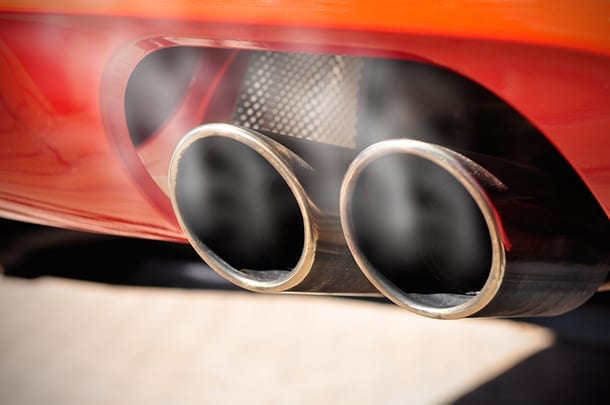
Exhaust Systems Explained
We’ve already talked about how engines and transmission systems work, but what happens to the leftover gases after the fourth, exhaust stroke of the engine? Long gone are the days when exhaust systems simply vented that gas into the open air. Thankfully, long gone are also the days when you used to have to drive all the way to the bank to apply for car finance. Many of the gases produced by burning petrol — carbon monoxide, complex hydrocarbons, and several oxides of nitrogen — are toxic. These gases can contribute heavily to urban smog and even caused fatalities before modern exhaust systems became commonplace. They’re a wonder of technology, so let’s see how they work.
The Chemistry: Exhaust Gases, Catalytic Converters, and Sensors
Burning petrol, especially under the high pressures inside an engine cylinder, creates a wide variety of waste gases that are at best unpleasant and environmentally damaging, and at worst, toxic. In addition to carbon dioxide, burning petrol releases carbon monoxide, nitrous oxide, gaseous nitric acid and a host of more complex hydrocarbons. The buildup of gases that could lead to sickness or even death used to be a real danger in heavy traffic, but catalytic converters and oxygen sensors have reduced this danger significantly.
Catalytic converters turn most of these noxious gases into far more benign ones: carbon dioxide and nitrogen gas. Although carbon dioxide isn’t entirely harmless, it’s far less dangerous than carbon monoxide. Catalytic converters take advantage of the way that Platinum group metals, including Platinum, Palladium, and Rhodium, drastically speed up the reactions that turn toxic gases into more chemically stable gases by passing the exhaust through a honeycomb of these metals.
Of course, it’s better to prevent the gases from forming in the first place, and the secret is oxygen. When there is more oxygen present to burn the petrol, it will burn more efficiently, and more of it will break down into carbon dioxide and water vapour. Modern cars have oxygen sensors that monitor the exhaust and ensure that enough oxygen is supplied to the engine.
The Acoustics: Mufflers and Exhaust Pipes
Another unavoidable evil of a running engine is that they’re incredibly noisy. Similarly to how catalytic converters reduce the exhaust’s chemical footprint, mufflers drastically cut the noise made by your engine. Though there are a few common muffler designs, they all follow the same principle of muting the sound waves created by the engine by either making them destructively interfere with each other or by dissipating their energy. Fibreglass is a common muffler element because it absorbs sound.
At the end of the process, exhaust pipes vent all the gases and sound waves produced by your engine. Though that sounds simple enough, a well-designed exhaust pipe will not only further reduce your engine’s running noise, but also prevent air pressure from pushing exhaust backwards into the system, which can cause plenty of engine and exhaust system problems.
If you want to get the most out of your investment, you should know how it works. Not only is it helpful in choosing a car, it’s helpful in identifying problems later on and in talking knowledgeably to mechanics.
If you’re thinking of buying a new or used car, then 360 Finance can help you find the best car finance on the market.

